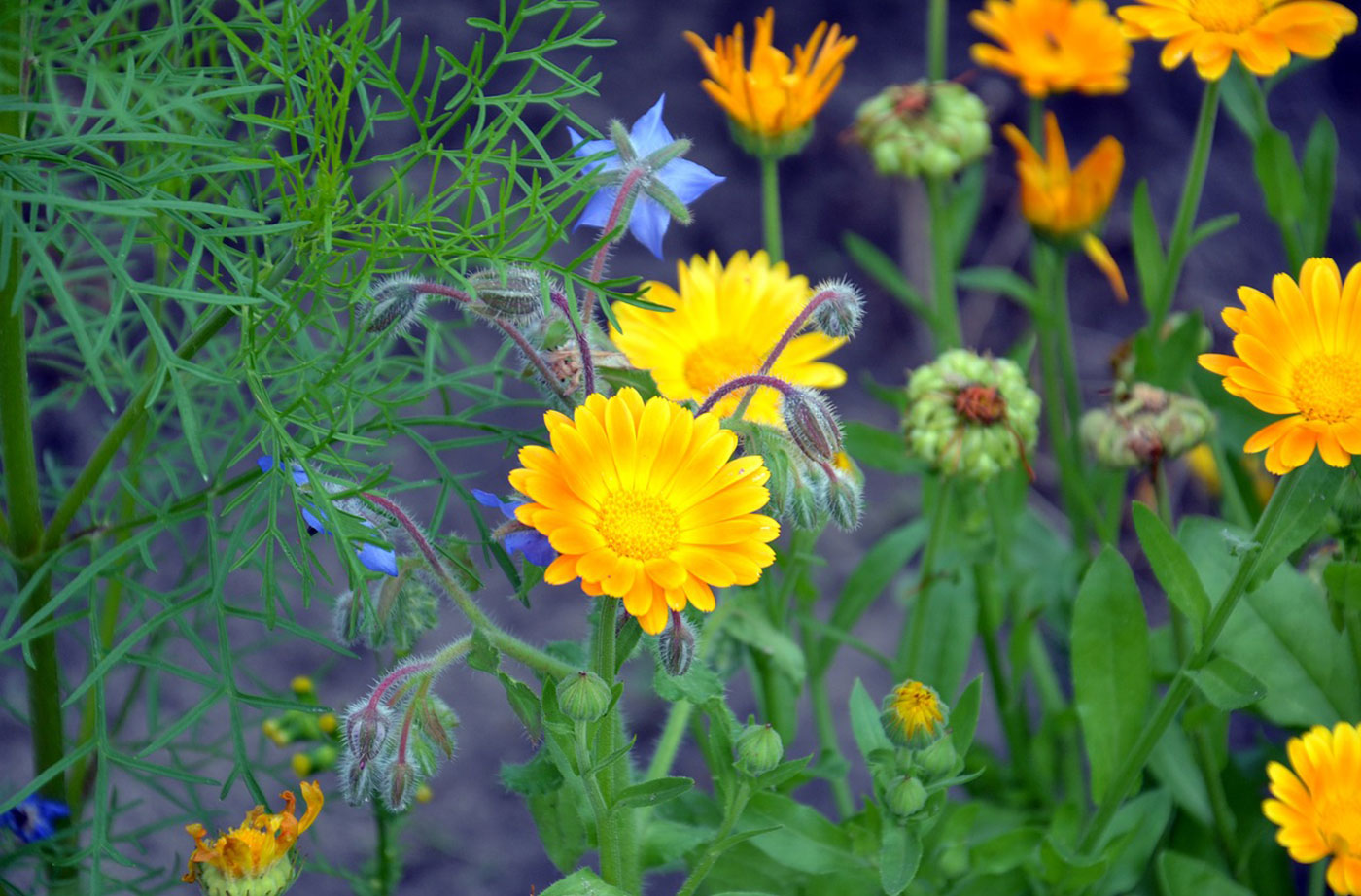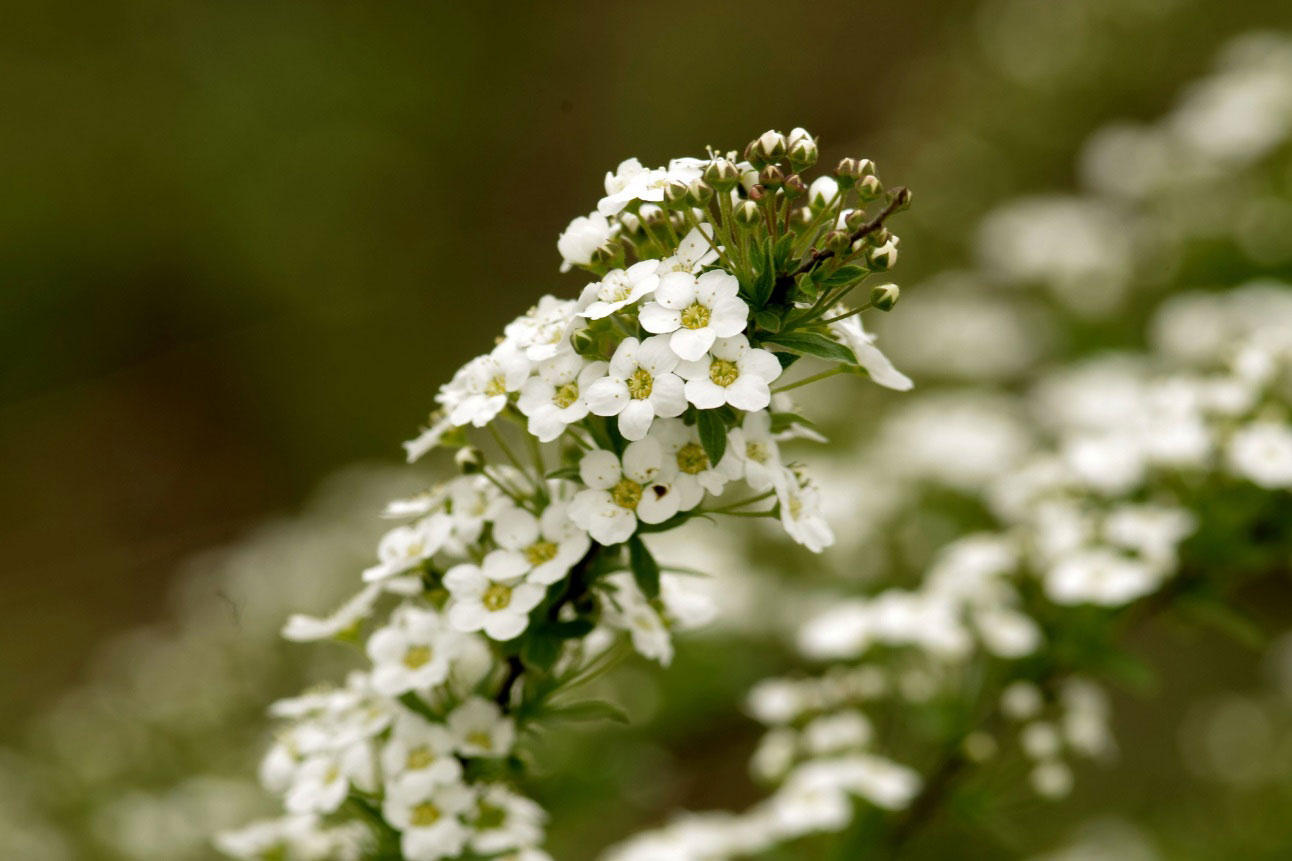
Calendula & Borage
Spring really is coming. Signs are everywhere. Earlier this week (March 20th) was the Vernal Equinox which marks the first day of spring in the Northern Hemisphere!
Three weeks ago I spied my first Turkey Vulture of the year after my presentation on pollinators to the wonderful folks at St. Mary’s Garden Club in Falmouth.
Our beloved Red-winged Blackbirds have arrived! Their distinctive “conk-la-ree” song is a herald of spring. Check out the Journey North maps to track the movements of other eagerly anticipated wildlife like: Baltimore Orioles, monarchs, hummingbirds, and more.
I am brimming with ideas and constantly logging inspirational moments and observations to document. I’m having so much fun! I hope you’ll be part of the conversation.

Sweet Alyssum
As you probably know, now is the time to start seeds indoors and while you may already have done so, or are still planning to, wouldn’t it be lovely to do this as an intentional ceremonial celebration of spring? Sow something special for the bees at this magical time, and involve the little ones in your life!
Here are three annual plants to start indoors now – a sampling of what I call “SuperStar Plants” for the Bee Garden. Sow now and enjoy the buzzing beauty of your garden throughout the summer and fall, while helping any number of our 270+ species of native bees to get some critical nourishment. You’ll also be supporting a wide array of other beneficial insects like ladybugs, mantids, and more. I recommend Mary M. Gardiner’s book “Good Garden Bugs” for more information.
1. Calendula (pot marigold, orange flower in above picture) is a wonderful exotic annual that blooms throughout the season (spring until a hard frost). It is drought tolerant and deer resistant. Make sure to plant calendula in a spot in your landscape where you won’t mind its prolific spread over the years. It’s an enthusiastic self-sower, so allow some space. I specifically recommend Calendula officianlis (Orange Button). Calendula makes a wonderful tea, dye, and has many medicinal uses as well.
2. Sweet alyssum (Lobularia maritima) is low growing, fragrant, and adds a lovely texture to patio pots, planters, or along the front of a garden border. It’s easy to grow and is a long bloomer. I haven’t had the best luck growing this one with direct-sowing (maybe my free-range bantam hens ate all my seeds?!) and am going to start it indoors this year. It’s a high value plant that produces lots of nectar for our native bees.
3. Cilantro is the herb form of what we call “coriander” seeds used in cooking (Coriandrum sativum). This high-value herb will attract sweat bees and more native bees throughout a month-long blooming period. Cut some cilantro for use in the kitchen and allow a patch to flower and go to seed. That way your plants will re-seed (self-sow) and you can harvest some coriander seeds to make any variety of wildly delicious Indian meals later on.
You can also sow a number of native perennials outside right now including aster, columbine, milkweed, lobelia, coneflower, spirea (meadowsweet), and more. See The Wild Seed Project for more information and to buy seeds.
Wouldn’t it feel great to go even further – to plan a full-scale pollinator and bird garden? Work with me to create a habitat garden that is easy to care for, benefits wildlife in need, and provides an outdoor sanctuary for you and your guests.
Did you know? We have more than 4,000 species of native bees in North America that have co-evolved with our native plants over millions of years, many of which are experiencing catastrophic declines.
Sometimes protecting the earth can seem overwhelming. But there are things people can do in their own yard to make the world a better place for native wildlife. On her NRCM blog, Deb Perkins generously shares her 25 years of knowledge and experience with readers of this blog. The tips she provides here are just a small sampling of what she provides to clients interested in creating habitat for birds, bees, butterflies, and other wildlife. Visit her First Light Wildlife Habitats for more information about how Deb can help you enhance your property for the benefit of native wildlife.









Leave a Reply